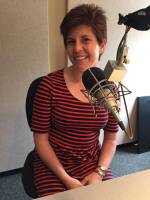Most healthy children are inattentive, hyperactive or impulsive at one time or another. However, The Corsini Encyclopedia of Psychology and Behavioral Science defines Attention-Deficit/Hyperactivity Disorder (ADHD) as being characterized by persistent and chronic inattention and/or excessive motor restlessness and impulsivity.
I have seen some of my students at Southeast struggle with this condition as they adapt to college life.
The American Academy of Pediatrics provides specific guidelines for the diagnosis of ADHD. The primary care clinician should initiate an evaluation for ADHD for children who present with academic or behavioral problems. Using reports from parents and teachers, the clinician should determine if all the criteria for ADHD have been met. Recommendations for treatment of symptoms of ADHD in children and youth vary depending on the patient's age. ADHD is a chronic condition and, while some children have a lessening of symptoms as they mature, many continue to have symptoms into adulthood. My students often need help with executive functioning: getting and staying organized.
Concerns have been raised about boys being diagnosed with ADHD more often than girls. There is debate about whether this is because boys mature more slowly---and what is characterized as problematic behavior is actually age appropriate---or because boys with ADHD tend to display more hyperactive symptoms that get them diagnosed while girls with ADHD go undiagnosed because they are what the Mayo Clinic referred to as “quietly inattentive.”
Resources:
http://pediatrics.aappublications.org/content/128/5/1007
http://pediatrics.aappublications.org/content/108/4/1033
https://www.mayoclinic.org/diseases-conditions/adhd/symptoms-causes/syc-20350889
https://www.aacap.org/aacap/families_and_youth/facts_for_families/fff-guide/College-Students-with-ADHD-111.aspx
Currie, J., Stabile, M., & Jones, L. (2014). Do stimulant medications improve educational and behavioral outcomes for children with ADHD? Journal of Health Economics, 37, 58–69. https://doi-org.proxy.mul.missouri.edu/10.1016/j.jhealeco.2014.05.002
Schweitzer, J. B.. (2010). Attention Deficit/Hyperactivity disorder. In W. E. Craighead, & C. B. Nemeroff (Eds.), The Corsini encyclopedia of psychology and behavioral science (4th ed.). Hoboken, NJ: Wiley. Retrieved from https://library.semo.edu:2443/login?url=https://search.credoreference.com/content/topic/attention_deficit_hyperactivity_disorder?institutionId=1804



